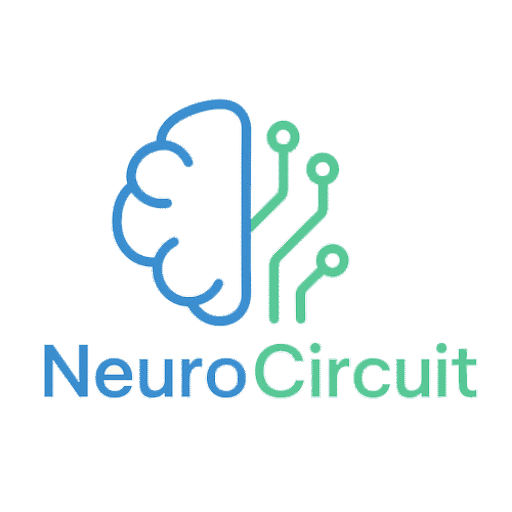Robotics articles
How to Start Learning Robotics: Step-by-Step Guide for Beginners
Robotics Fundamentals: How to Enter the World of Robotics and Start Your Learning Journey
Introduction
Robotics is one of the most exciting and rapidly growing fields in technology today. From industrial robots to home assistants and AI-powered intelligent robots, opportunities in robotics continue to expand every year. For beginners, the vast array of technologies, components, and programming concepts can feel overwhelming. This article aims to explain the fundamentals of robotics in a simple, accessible way and provide a clear roadmap for entering this fascinating field.
We recommend listening to the following podcast after reading the article for a better understanding
Section 1: What is Robotics?
Robotics is an interdisciplinary field that combines mechanical engineering, electrical engineering, electronics, computer science, and artificial intelligence. Simply put, robotics is the study and creation of systems that can perform tasks autonomously or semi-autonomously.
Most robots have three key components:
-
Sensors – Devices that detect the environment (e.g., distance sensors, cameras, gyroscopes).
-
Actuators – Components that produce movement (e.g., motors, servos).
-
Control System – Usually a microcontroller or processor that interprets sensor data and controls the actuators.
Section 2: Why Learn Robotics?
Learning robotics provides numerous benefits:
-
Problem-solving skills: Building robots requires logical thinking and creativity.
-
Career opportunities: Robotics spans industries like manufacturing, healthcare, agriculture, and entertainment.
-
Hands-on experience: Robotics combines theory with practical work, allowing learners to apply knowledge immediately.
-
Foundation for AI and automation: Robotics is a natural gateway to learning advanced fields like machine learning, computer vision, and autonomous systems.
Section 3: Core Areas of Robotics
To understand robotics fully, beginners should focus on these main areas:
-
Mechanical Design – Understanding how parts move, designing chassis, linkages, and robotic arms.
-
Electronics – Learning about circuits, sensors, actuators, and power systems.
-
Programming – Writing software to control robots, usually in languages like Python, C/C++, or ROS (Robot Operating System).
-
Control Systems – Algorithms to ensure robots behave as intended, e.g., PID controllers for motors.
-
AI and Perception – Using cameras, sensors, and algorithms to allow robots to understand their environment.
Section 4: Step-by-Step Path to Start Learning Robotics
Here’s a roadmap for beginners to get started:
Step 1: Learn the Basics of Electronics
-
Understand voltage, current, resistance, and basic components like LEDs, resistors, and sensors.
-
Practice with simple kits like Arduino or Raspberry Pi starter packs.
Step 2: Learn Programming for Robotics
-
Start with Python or C/C++ for microcontrollers.
-
Learn to read sensor data and control actuators.
-
Build simple projects like blinking LEDs, line-following robots, or obstacle-avoiding bots.
Step 3: Work on Simple Projects
-
Assemble a small robot kit.
-
Use motors, wheels, and sensors to create moving robots.
-
Experiment with different sensors: ultrasonic, infrared, or temperature sensors.
Step 4: Explore Microcontrollers and Single-Board Computers
-
Arduino is great for beginners.
-
Raspberry Pi allows more complex projects with image processing and AI.
-
Learn to interface sensors, motors, and cameras with these boards.
Step 5: Learn Robot Simulation and ROS (Robot Operating System)
-
ROS is the standard in professional robotics.
-
Use simulators like Gazebo to test robots virtually before building them.
-
Practice programming robot behaviors and algorithms in a safe environment.
Step 6: Explore AI and Machine Learning in Robotics
-
Basics: computer vision, object detection, path planning.
-
Learn to integrate AI models to make robots smarter and autonomous.
Step 7: Join Robotics Communities and Competitions
-
Communities: ROS Discourse, Reddit robotics, GitHub projects.
-
Competitions: FIRST Robotics, RoboCup, local maker events.
-
Real-world exposure accelerates learning and builds your portfolio.
Section 5: Recommended Resources
-
Books:
-
“Introduction to Robotics: Mechanics and Control” by John Craig
-
“Robotics, Vision and Control” by Peter Corke
-
-
Online Courses:
-
Coursera: “Robotics Specialization”
-
edX: “Autonomous Mobile Robots”
-
Udemy: Arduino & Raspberry Pi beginner projects
-
-
Kits & Hardware:
-
Arduino Starter Kit
-
Raspberry Pi Kit
-
Micro:bit
-
DIY robotics kits for hands-on learning
-
Section 6: Common Beginner Mistakes
-
Skipping basics: start with small, simple projects.
-
Buying expensive hardware too soon.
-
Ignoring simulation: virtual testing helps prevent hardware mistakes.
-
Not documenting projects: notes and code versioning are crucial.
Section 7: Future of Robotics
Robotics is evolving rapidly:
-
Autonomous robots: delivery drones, self-driving cars
-
Industrial automation: smart factories with AI
-
Healthcare robotics: surgical robots, rehabilitation assistants
-
Agricultural robotics: drones and automated harvesters
Learning robotics now opens doors to all these emerging technologies. Even basic skills can lead to exciting projects and future career opportunities.
Conclusion
Entering the world of robotics can feel overwhelming at first, but by following a structured learning path—from electronics and programming to sensors, control systems, and AI—you can gradually build both knowledge and practical skills. Start small, practice consistently, join communities, and embrace challenges. The field of robotics rewards curiosity, creativity, and persistence, and with the right roadmap, anyone can become proficient and innovate in this exciting domain.
Join our newsletter to get the latest projects, tutorials, and tech updates straight to your inbox! 🚀

